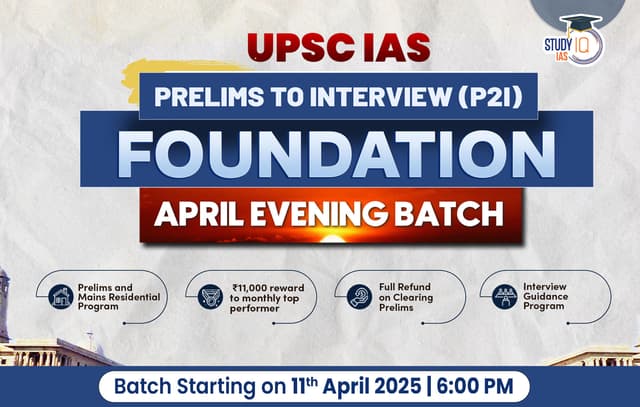Table of Contents
Pilgrimage Rejuvenation and Spiritual Heritage Augmentation Drive (PRASHAD) Scheme
The PRASHAD scheme, launched in 2014-15 by the Union Ministry of Tourism, is a transformative initiative aimed at developing and promoting religious tourism in India. It is a Central Sector Scheme, emphasizing integrated, planned, and sustainable development of pilgrimage destinations across the country. This initiative aligns with India’s vision of leveraging its rich cultural and spiritual heritage to boost tourism and socio-economic growth.
Key Objectives of PRASHAD Scheme
- Promotion of Religious Tourism
- The scheme seeks to enhance and promote India’s religious tourism potential, focusing on pilgrimage destinations that hold cultural and spiritual significance.
- Integrated Development of Pilgrimage Destinations
- It aims to develop religious sites in a prioritized, planned, and sustainable manner to deliver a comprehensive religious tourism experience.
- Employment Generation and Economic Boost
- By enhancing tourism infrastructure, the scheme creates employment opportunities for local communities and stimulates the regional economy.
- Sustainable Development
- Ensures the preservation of heritage and cultural values while developing modern tourism amenities, balancing tradition and innovation.
Convergence with Other Schemes
The PRASHAD scheme works in tandem with other central and state-level schemes to ensure holistic development:
- Swadesh Darshan Scheme: Focuses on theme-based tourist circuits, complementing PRASHAD’s destination-specific development.
- Smart Cities Mission: Integrates modern urban infrastructure with religious sites in smart cities.
- Atal Mission for Rejuvenation and Urban Transformation (AMRUT): Provides urban infrastructure support for pilgrimage destinations.
Salient Features of PRASHAD Scheme
- Central Sector Scheme
- The scheme is fully funded by the Central Government, with funds allocated for the development of religious tourism infrastructure.
- Development Approach
- Focuses on creating world-class facilities, including accommodation, sanitation, roads, public conveniences, and environmental protection measures.
- Sustainability
- Emphasis on eco-friendly practices, preservation of cultural heritage, and the involvement of local communities in tourism-related activities.
- Project Prioritization
- Sites are selected based on their religious, cultural, and tourism significance.
Achievements of PRASHAD Scheme
Since its inception, the PRASHAD scheme has successfully revitalized several pilgrimage destinations, enhancing their accessibility and amenities. Key projects include:
- Ajmer (Rajasthan): Development of tourism infrastructure at the Dargah Khwaja Sahib and Pushkar Lake.
- Amritsar (Punjab): Infrastructure improvements around the Golden Temple and Gobindgarh Fort.
- Puri (Odisha): Development of facilities around the Jagannath Temple and its periphery.
- Gaya (Bihar): Upgradation of amenities at Bodh Gaya, a UNESCO World Heritage site.
Impact of PRASHAD Scheme
1. Boost to Religious Tourism
- Enhanced infrastructure and amenities have made religious tourism destinations more appealing to domestic and international tourists.
2. Preservation of Heritage
- Promotes the conservation of India’s spiritual and cultural assets while integrating modern facilities.
3. Socio-economic Growth
- Local communities have benefited through increased employment opportunities and the growth of ancillary industries.
4. International Recognition
- The improved infrastructure has bolstered India’s image as a global hub for spiritual tourism.
Way Forward for PRASHAD Scheme
To further the success of the PRASHAD scheme, the following measures are suggested:
- Enhanced Public-Private Partnership (PPP)
- Encourage private sector investment to complement government funding.
- Digital Initiatives
- Promote destinations through digital campaigns and virtual experiences to attract global tourists.
- Community Engagement
- Actively involve local communities in planning and managing tourism-related activities.
- Sustainability Practices
- Adopt eco-friendly and sustainable tourism practices to minimize environmental impact.
- Monitoring and Evaluation
- Implement robust mechanisms for tracking the progress and effectiveness of projects.
Conclusion
The PRASHAD Scheme exemplifies India’s commitment to preserving its spiritual heritage while leveraging it for tourism and socio-economic growth. By integrating modern infrastructure with cultural preservation, the scheme has positioned India as a global destination for spiritual tourism. For UPSC aspirants, understanding PRASHAD offers insights into the interplay between governance, cultural heritage, and economic development, making it a vital topic for exam preparation.


 Topological Materials: The Future of Qua...
Topological Materials: The Future of Qua...
 China’s Deep Sea Station in South Chin...
China’s Deep Sea Station in South Chin...
 Project ICE-CRUNCH: India-Switzerland Co...
Project ICE-CRUNCH: India-Switzerland Co...





















